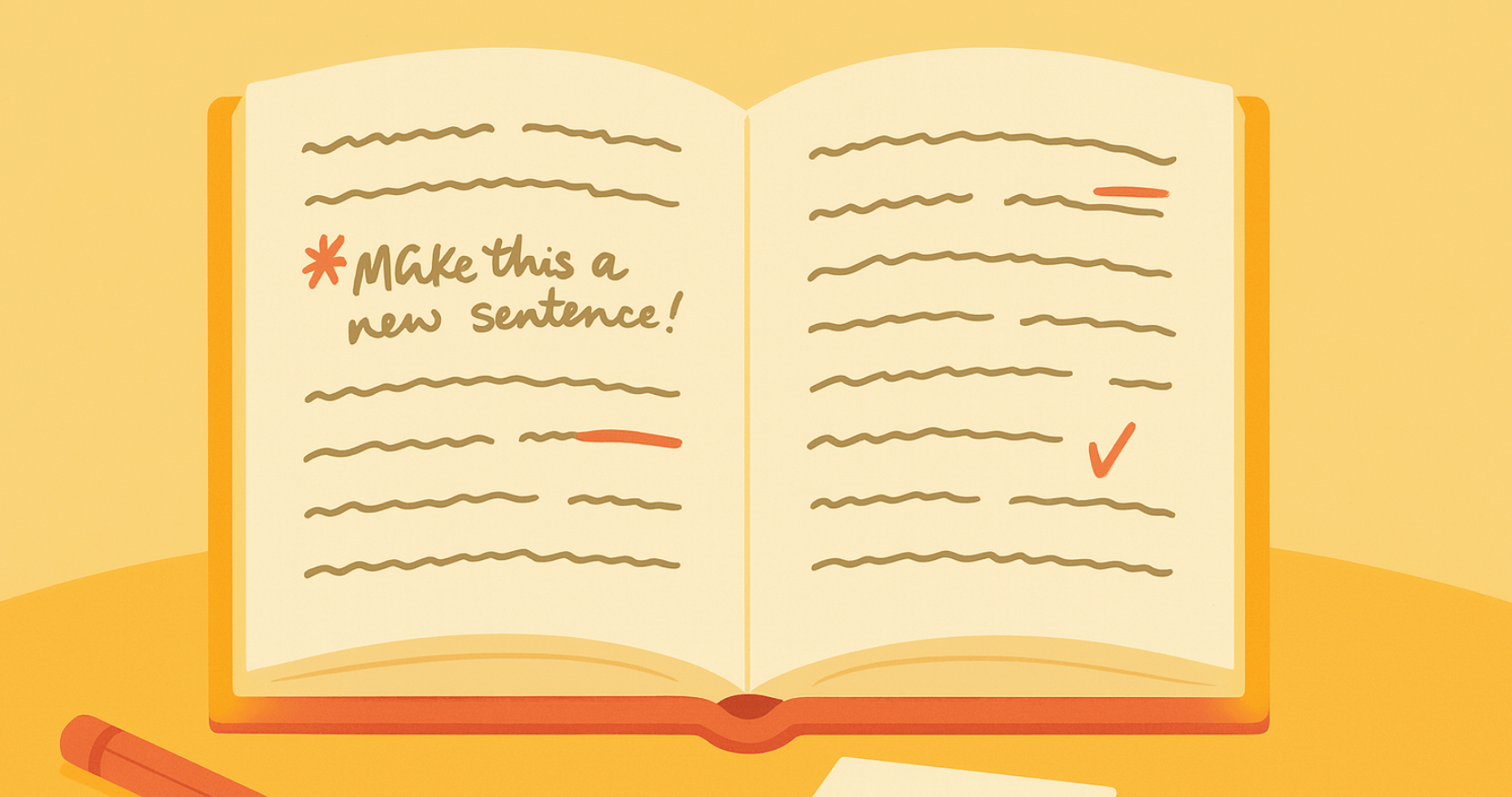Poetry is having a moment. From beautifully curated Instagram feeds to bestselling e-books, poetry is thriving in a way that no one could have predicted a decade ago. For many aspiring poets, the question isn’t if they should publish a collection but how. If you’ve ever dreamed of holding your own poetry book, sharing your words with readers, and gaining recognition for your work, there’s no better time than 2024 to make it happen.
Self-publication offers poets the freedom to write and share their work without the constraints of traditional publishing.
The good news? You no longer need to navigate the often intimidating world of traditional publishing. Self-publishing has emerged as the ideal route for poets, offering full creative control, faster timelines, and an opportunity to connect directly with your audience. With platforms like Spines, self-publishing your poetry collection has never been easier, more affordable, or more rewarding.
This article will guide you through every step of the process—from preparing your manuscript to marketing your book—and show you why Spines is the ultimate tool for bringing your idea and your poetry to life. Ready to take the first step toward publishing your dream collection? Let’s dive in.
Why Self-Publishing Is Perfect for Poets
Full Creative Control Over Your Work When you self-publish, your poetry remains entirely yours. From the title to the cover design to the formatting of line breaks, every decision stays in your hands. Traditional publishers often push poets to compromise their creative vision to fit market trends, but self-publishing ensures your voice remains authentic.
Unlike traditional publishing houses, independent publishers often provide more flexibility and opportunities for emerging poets.
Ownership of Intellectual Property Retaining full intellectual property rights into your work means you’re free to publish, distribute, and monetize your poetry however you like. Your poetry is your intellectual property, and self-publishing protects that.
Faster and More Affordable than Traditional Publishing The traditional publishing process can take years and may still result in rejection. In contrast, self-publishing allows you to bring your poetry book to market in months (or even weeks) with tools that are cost-effective and user-friendly.
Self-Publish Your Poetry Collection: How to Prepare Your Poetry Manuscript
Organize Your Work Your poetry collection needs to feel cohesive. Whether your poems explore love, nature, identity, or your personal experience and growth, a unifying theme or narrative can make your collection resonate with readers. When preparing your poetry manuscript, one of the first questions to consider is how many poems to include in your collection. Aim for around 50–100 poems, depending on your desired length and format.
Polish Every Poem Use beta readers, trusted friends, or professional editors to refine your poems. Consider submitting individual pieces or poems to literary journals for feedback. Each poem should shine on its own while contributing to the overall collection.
Your Publishing Journey Awaits – Start NowFormat Like a Pro Ensure proper spacing, line breaks interior formatting, and page numbering. Poetry formatting is a fine art, and your manuscript should look as good as it reads.
Editing and Revisions
Editing and revisions are crucial steps in the self-publishing process. As a poet, it’s essential to review your work multiple times to ensure that it’s error-free and polished. Here are some tips to help you edit and revise your poetry manuscript:
- Take a Break: After completing your poetry manuscript, take a break before diving into the editing process. This pause allows you to return with fresh eyes, making it easier to spot errors and areas for improvement.
- Read Aloud: Reading your poems aloud can help you identify awkward phrasing, unclear language, and rhythm issues. This technique is particularly useful for poetry, where the sound and flow of words are crucial.
- Use Tools and Manual Proofreading: While grammar and spell check tools are helpful, they can miss nuances specific to poetry. Always proofread manually to catch subtle errors and ensure your work maintains its intended meaning and impact.
- Seek Feedback: Consider hiring a professional editor or sharing your manuscript with beta readers. Their feedback can provide valuable insights and help you refine your poems. Be open to constructive criticism and willing to make changes to strengthen your work.
- Revise Diligently: Editing is an iterative process. Be prepared to revise your poems multiple times, focusing on clarity, coherence, and emotional impact. Each revision brings you closer to a polished and compelling poetry manuscript.
Organizing Your Poems
Organizing your poems is a critical step in creating a cohesive and engaging poetry collection. Here are some tips to help you organize your poems:
- Group by Theme, Tone, or Style: To create a unified poetry collection, consider grouping your poems by common themes, tones, or styles. This approach helps readers connect with your work on a deeper level and enhances the overall reading experience.
- Consider Flow and Pacing: The order of your poems can significantly impact how readers experience your collection. Arrange your poems to create a natural progression, balancing intense pieces with lighter ones to maintain reader engagement.
- Use Section Breaks: If your collection covers multiple themes or styles, use section breaks or dividers to clearly separate different parts of your book. This structure helps readers navigate your collection and appreciate its diversity.
- Experiment with Arrangements: Don’t be afraid to experiment with different arrangements until you find one that feels right. The order of your poems should enhance the emotional journey you want to take your readers on.
- Impact on Reader’s Experience: Always keep the reader in mind. Think about how the sequence of your poems will affect their experience and aim to create a collection that resonates and leaves a lasting impression.
Designing Your Poetry Book
Designing your poetry book is an exciting step in the self-publishing process. Here are some tips and ideas to help you create a beautiful and professional-looking book:
- Choose the Right Font: Select a font that is clear and easy to read. Consistency is key, so use the same font throughout your book to maintain a cohesive look.
- Select a Suitable Trim Size: Poetry books often benefit from a trim size that complements the format. A popular choice is 5.5 x 8.5 inches, which provides a comfortable reading experience and a professional appearance.
- High-Quality Materials: Invest in high-quality paper and binding to ensure your book feels professional and durable. The tactile experience of your book can significantly impact readers’ perceptions.
- Add Visual Elements: Consider incorporating illustrations or graphics to enhance the visual appeal of your book. These elements can complement your poetry and add an extra layer of meaning.
- Proofread Carefully: Before finalizing your book, proofread it meticulously to catch any errors or formatting issues. A polished and error-free book reflects your professionalism and dedication to your craft.
Book Design Essentials
When designing your poetry book, there are several essential elements to consider. Here are some key things to keep in mind:
- Clear and Concise Title: Your book’s title should reflect the theme or tone of your collection. A compelling title can intrigue potential readers and give them a glimpse of what to expect.
- Compelling Cover Design: The cover is the first thing readers will see, so make it count. Create a cover design that grabs attention and conveys the essence of your poetry. Spines offers tools and templates to help you design a stunning cover.
- Headings and Subheadings: Use headings and subheadings to break up your poems and create a clear structure. This organization helps readers navigate your book and enhances readability.
- Consistent Font Size and Style: Choose a font size and style that is easy to read and use it consistently throughout your book. Consistency in design elements contributes to a professional and polished look.
- Table of Contents or Index: Consider adding a table of contents or index to help readers navigate your book. This feature is particularly useful for longer collections and enhances the overall reading experience.
By following these tips, you can create a poetry book that is not only visually appealing but also professionally written and crafted, ensuring your work stands out in the competitive world of self-published poetry.
Creating a Captivating Cover
A captivating cover is essential for a poetry book, as it can make or break the reader’s first impression. When designing a cover for your poetry book, consider the following tips:
- Use a High-Quality Image: Choose an image that resonates with the theme and tone of your poetry. A high-quality, visually appealing image can draw readers in and give them a glimpse of what to expect inside.
- Choose a Clear, Concise Font: Your book title and author name should be easy to read. Select a font that is both aesthetically pleasing and legible, ensuring it complements the overall design.
- Make It Attention-Grabbing: Your cover should stand out in a crowded market. Use bold colors, striking imagery, and a clean layout to catch the eye of potential readers.
- Consider Professional Help: If design isn’t your strong suit, hiring a professional designer can be a worthwhile investment. A well-designed cover can significantly boost your book’s appeal and sales potential.
- Consistency with Your Brand: Ensure your cover aligns with your author brand and style. It should reflect the essence of your poetry and appeal to your target audience.
A well-designed cover can increase sales potential and make your book stand out in a crowded market. Remember to keep your target audience in mind when designing your cover, as it should appeal to them and reflect the content of your book.
Why Spines Is the Best Way to Self-Publish Your Poetry
Poet-Centric Tools Spines was built with poets in mind. Its tools make formatting a poetry book—complete with precise line breaks and stanzas—effortless. Whether you’re creating a slim chapbook or a full-length collection, Spines ensures your poetry looks professional. Spines offers a comprehensive platform for poets looking to self-publish poetry with ease and professionalism.
Your Publishing Journey Awaits – Start NowSeamless Distribution With Spines, your poetry book can be distributed to major platforms like Kindle Direct Publishing and print-on-demand services, ensuring you reach both digital and print readers.
Affordable and Accessible Unlike some platforms that take hefty royalties or have complex pricing structures, Spines offers affordable options that leave more profits in your pocket.
Unmatched Creative Freedom From designing your own book cover to choosing the trim size, Spines lets you customize every detail of your book. Their intuitive platform ensures that even first-time publishers can create a professional-looking book with ease.
The Step-by-Step Guide to Self-Publishing with Spines
- Upload and Edit Your Manuscript Spines simplifies the process of uploading your poetry manuscript. You can easily tweak formatting to ensure your poems appear exactly as you envision them. Following these steps will help you successfully publish a poetry book that resonates with readers.
- Design a Stunning Cover A good cover is crucial—it’s the first thing potential readers will see. Spines offers tools and templates to help you design a cover that reflects your poetry’s theme and tone.
- Choose Print or E-Book Formats Decide whether you want to publish a print book, an e-book, or both. Each format comes with unique advantages, and Spines makes it easy to cater to both audiences.
- Order a Proof Copy Before your poetry book goes live, order a Proof Copy to check for formatting errors, typos, or design issues.
- Launch Your Book Once everything is perfect, publish your book and make it available on major platforms. Spines helps you with distribution to ensure your poetry reaches as many readers as possible.
Building an Author Platform
Building an author platform is crucial for self-published poets, as it allows you to connect with readers, promote your work, and establish yourself as a poet. Here are some tips for building an author platform:
- Create a Website or Blog: A dedicated website or blog is a great way to showcase your work, share updates, and connect with readers. It serves as a central hub for all your online activities and provides a professional presence.
- Leverage Social Media: Use platforms like Instagram, Twitter, and Facebook to promote your work, engage with readers, and build a community. Regularly share snippets of your poetry, behind-the-scenes looks at your writing process, and updates on your publishing journey.
- Start a Newsletter: Consider creating a newsletter or email list to keep readers informed about your work and upcoming events. Regular newsletters can help you build a loyal following and keep your audience engaged.
- Network at Events: Attend writing conferences, workshops, and events to network with other writers and industry professionals. These connections can provide valuable opportunities for collaboration and promotion.
- Join Online Communities: Participate in online communities and forums related to poetry and writing. Engaging with other writers and readers can help you build relationships and increase your visibility.
By building an author platform, you can increase your visibility, reach a wider audience, and establish yourself as a poet.
Other Publishing Options to Consider
While Spines is the easiest and most poet-friendly platform, other options exist. Noble Press and Kindle Direct Publishing offer alternatives, but they may lack the poetry-specific features that set Spines apart. Traditional publishing is also an option, but it’s time-consuming, highly competitive, and offers limited creative control.
For many poets, the journey of creative writing is deeply personal, and choosing the right publishing path is crucial to maintaining their artistic integrity.
For poets who want to retain full ownership of their work while benefiting from professional editing tools, Spines remains the best choice.
Marketing Your Self-Published Poetry Book
Building a Following on Social Media Platforms like Instagram is perfect for sharing individual pages of poems and connecting with potential readers. A curated feed can build anticipation for your book launch.
Leverage Early Reviews Send your book to beta readers or poetry bloggers to generate reviews before your launch. Early feedback helps create buzz and book sales.
Engage with Poetry Communities Join online poetry forums or Goodreads groups to connect with other poets and readers. Your active presence can drive interest in your work.
Run Targeted Ads Using targeted ads can help you reach readers who are likely to be interested in your poetry book. This ensures that your marketing efforts are focused on the right audience, increasing the chances of higher engagement and sales.
Success Stories of Self-Published Poets
Self-publishing has opened the door for countless poets to reach their audience. From young Instagram poets to established writers exploring new creative freedoms, self-publishing has helped them carve their place in the literary world. Spines has played a key role in many of these success stories, offering poets a platform to create, share, and sell their own work, on their terms.
Conclusion: Your Poetry Deserves the World’s Attention
There’s nothing more powerful than sharing your words with the world, and self-publishing makes that dream achievable. Platforms like Spines remove the barriers, empowering poets to take control of their creative journey and connect directly with readers.
The hardest part of publishing your poetry collection is taking the first step. So why wait? Your first poem collection could inspire, heal, or ignite change in someone else’s life. Let 2024 be the year you bring your poetry to life and take your place among self-published poets changing the literary landscape. Your words are waiting—start publishing today.
Your Publishing Journey Awaits – Start Now







